Sunday morning until 1PM is Team UAB in A’s ‘day’ off for the week. Despite the high winds the night before and again predicted for our day of leisure, the morning weather was somewhat calm and I decided a trip to the backyard was overdue. Backyard? Why shouldn’t our southern home have one? Palmer’s is the rocky area behind station before reaching the ice/snow of the glacier introduced in my first entry. The image below shows the expanse of our rocky, bouldered backyard ending at the glacier’s edge.
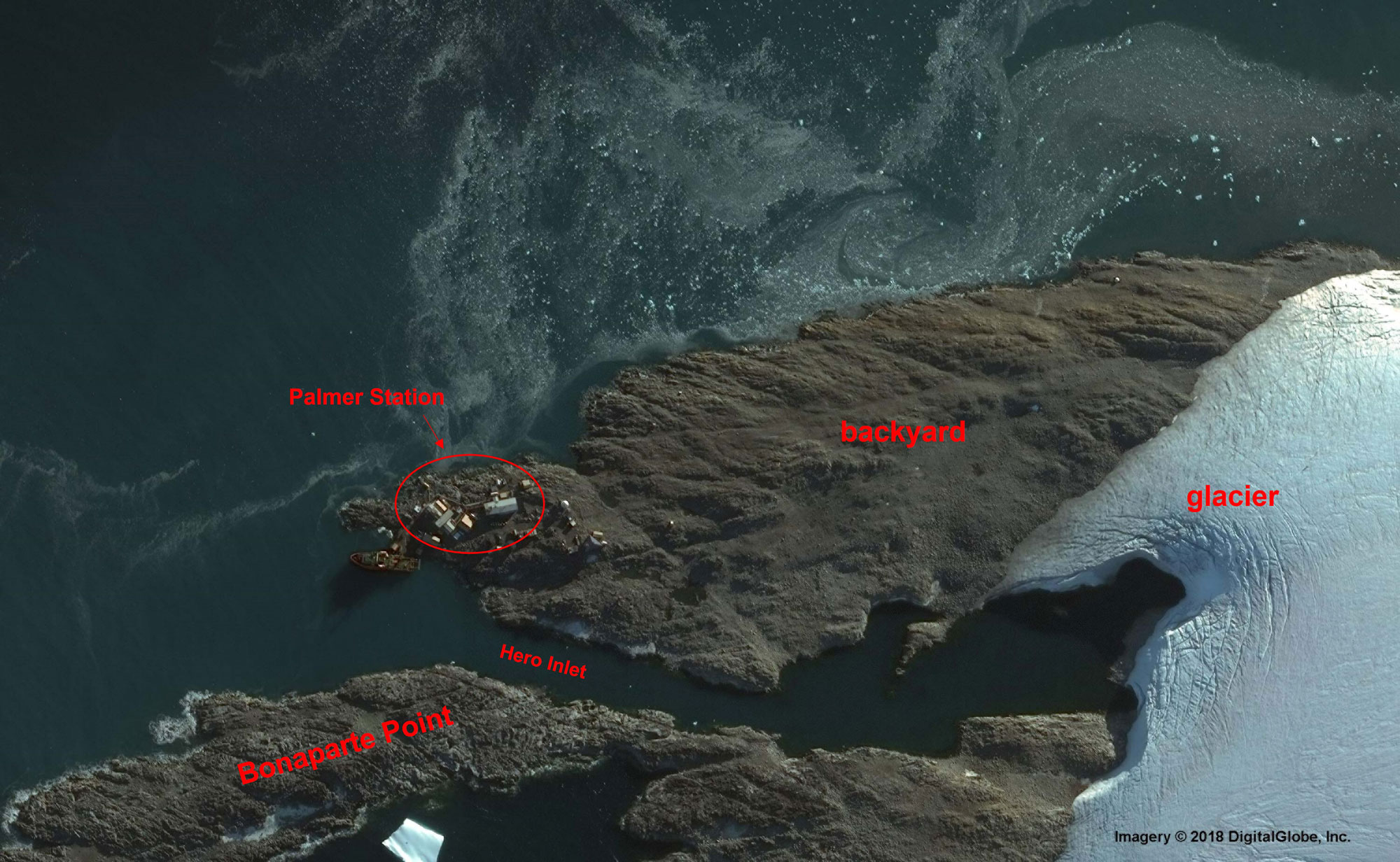
As I walked up the hill alongside Palmer’s main building, a light rain squall tried to discourage my trip. Undeterred, I walked on and within a few minutes, the sprinkle ended. Part of my motivation to get out into the wilds behind station was that during this February weekend bird lovers all across the globe celebrate birds by participating in the Great Backyard Bird Count. The goal is to identify and count all the birds seen or heard in any desired or convenient interval of time and then report the observations on a global database. Seemed only appropriate to contribute sightings from an Antarctic backyard.
Enroute, I made the first entry on my list – seven snowy sheathbills (Chionis albus). Sometimes called the Antarctic chicken for its resemblance to the barnyard fowl, these birds are very comfortable hanging around the station, even nesting under some of the buildings. Below is a chick reared beneath the carpentry shop and a watchful adult. The chick is several months old and just a few mottled baby feathers are evident on its neck. Resident bird scientists adorned the birds with ‘jewelry’, numbered leg bands in order to help track individuals.
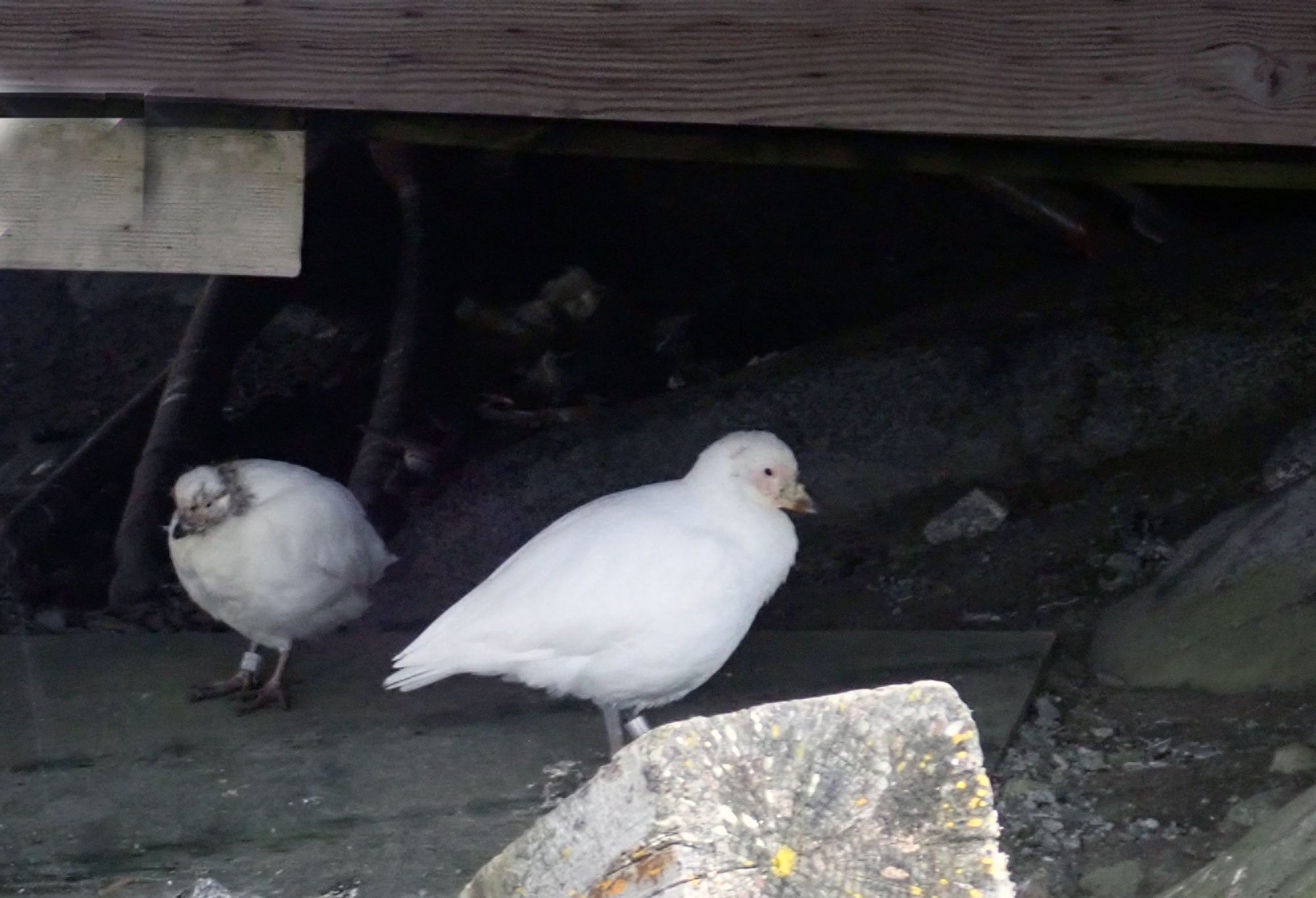
Sheathbills are curious and crafty birds. They scavenge for discarded food bits in bird rookeries and seal pupping areas. Sometimes, they work in pairs, sort of partners in crime – one distracting an adult bird while feeding its chick as the other sheathbill quickly moves in and snatches the snack from the intended mouth. Although its name means “Snow White”, sheathbills often do not demonstrate not the most family-friendly Disney behavior.
Sheathbills are the only endemic land bird of Antarctica. All the other avifauna are seabirds with varying ability to fly (none for penguins, of course) and swim. Sheathbills rank poorly in the swim category because, being a land bird, they do not have webbed feet. Their three-toed bony feet allow them to run on our rocky terrain and also make pretty good alarm clocks. There is a pair of birds that routinely chase each other across the metal roof above the dorm rooms early in the morning making quite a clatter to the dismay of light sleepers.
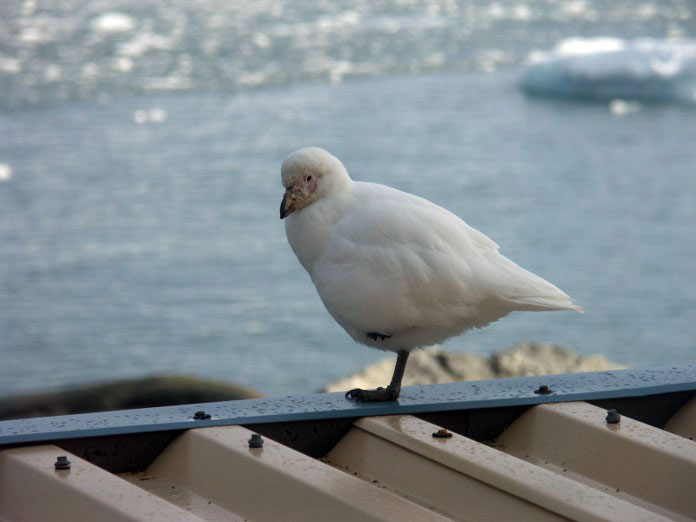
The first stop of my tour de backyard was the shoreline of Hero Inlet, the thin narrow band of water in the opening photo that runs between the station property and the rocky strip of land known as Bonaparte Point. There, on a flat boulder I would sit a spell and enjoy the scenery, though the fickle weather had clouds obscuring views of southern islands and the Antarctic Peninsula which were so stunningly evident in the glacier hike I previously described. A short distance away and across the inlet is a small colony of black back gulls – hard to see in the image below but nicely visible through my binoculars. Young juveniles with brown plumage, went for short swims in the water hastily returning to the nest when brown skuas swooped down on them. Hopefully, just marauding runs and no eggs or unguarded chicks were predated. A couple of times one of the adult sheathbills I saw on my way here flew to and from the colony. No telling if the sheathbill added to its diets at the expense of the gulls. All totaled in the 30 minutes I sat there I recorded 13 black back gulls (adults and recently flight-aware chicks), three brown skuas and the previously noted seven sheathbills. A quiet bird day – perhaps due to the weather.
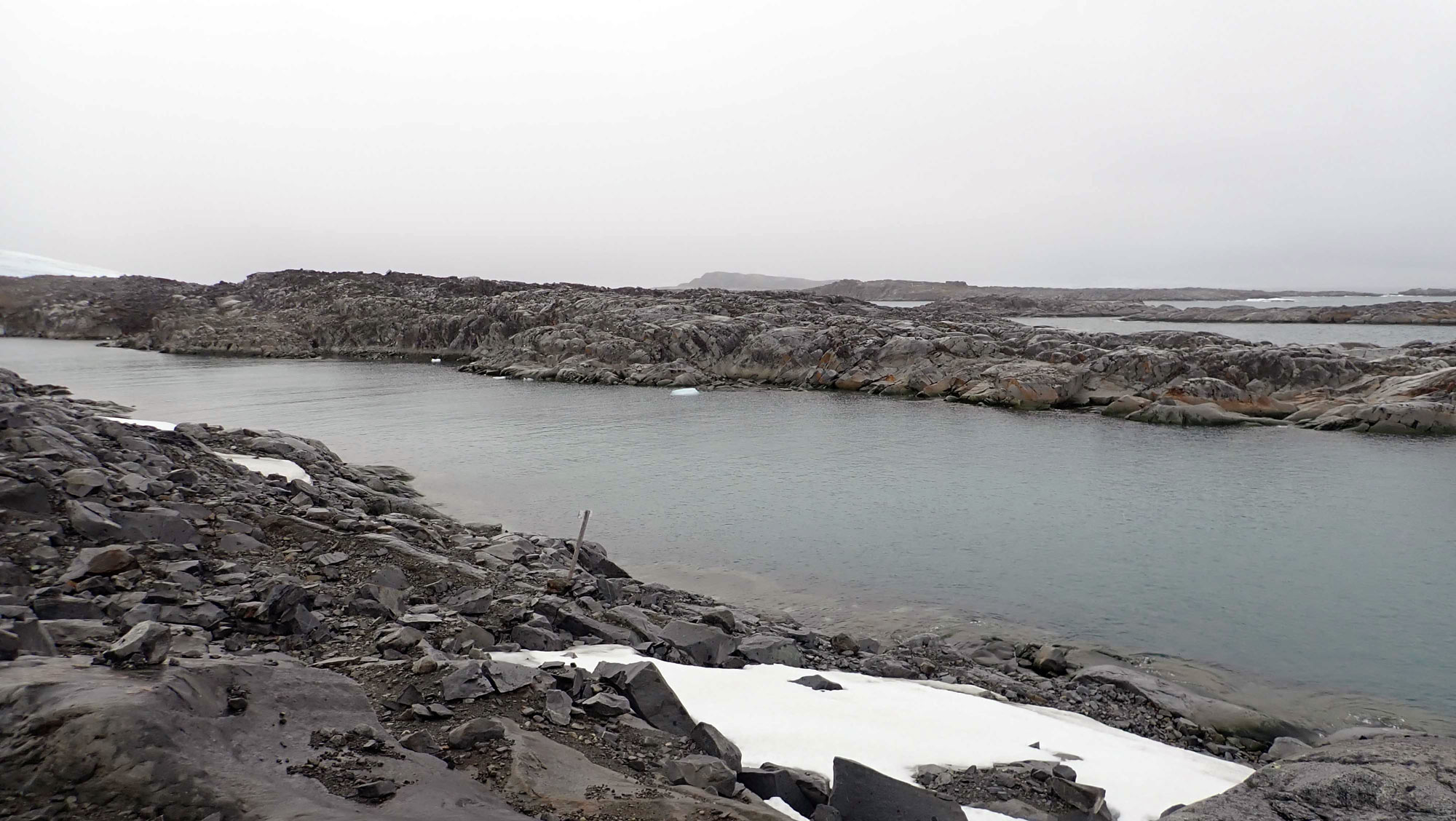
I decided to walk across the backyard to the other shoreline along Arthur Harbor. Once there, I stopped to check on the station rec hut. It is a tiny but cozy retreat for overnight stays or an afternoon reading room. The big window looks out onto the harbor and the two new islands revealed with the dramatic retreat of the glacier’s edge over the last decade.

I had hoped to add to my bird count on the Arthur Harbor side. The penguin rookery is a short zodiac ride away and penguins will often be sighted swimming along the shore. Not today. In fact I added no additional birds in this part of the backyard as I scampered along the rocks at water’s edge. I thought I might return to the Hero Inlet side of the backyard but noticed the western sky had darkened with the approach of another squall. Just as I reached the main station building a furious, but short lived blizzard ensued.
Throughout the workday that afternoon we worked on various aspects of our ocean acidification experiment. As the hours progressed into evening, the winds calmed and the backyard began beckoning me. Sleepy but pleased with the day’s accomplishments, I trekked again to the Hero Inlet side of the backyard and another kind of rec accommodation – a tent platform- fashioned of reclaimed pallets and plywood. I store a bivy sac and sleeping bag in heavy plastic bags out there for nights that are conducive to camping. As I was settling into my sleeping bag a small dark object wheeled overhead – a bat?! - no, a sweet little Wilson’s storm petrel. Where were you when I was bird counting I thought. Perhaps the petrel is enjoying some overdue air time, as I am enjoying some overdue sleeping bag time. I nodded off watching the fading sunset and to the lullaby the cry of seagulls accompanied by waves lapping the rocks of Hero Inlet, and the occasional bark of a fur seal.
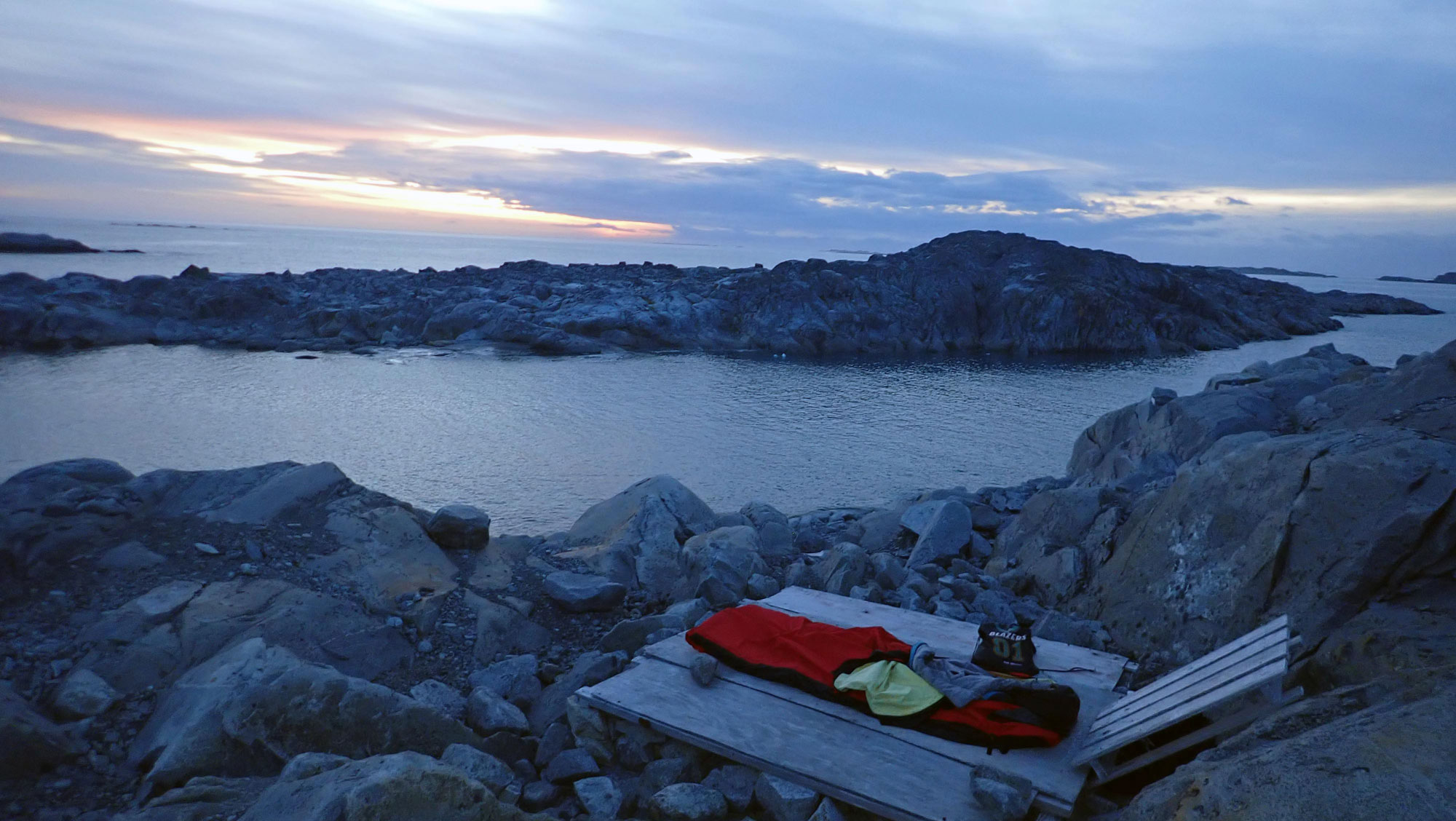
Want to know more about Palmer’s backyard? Send questions to